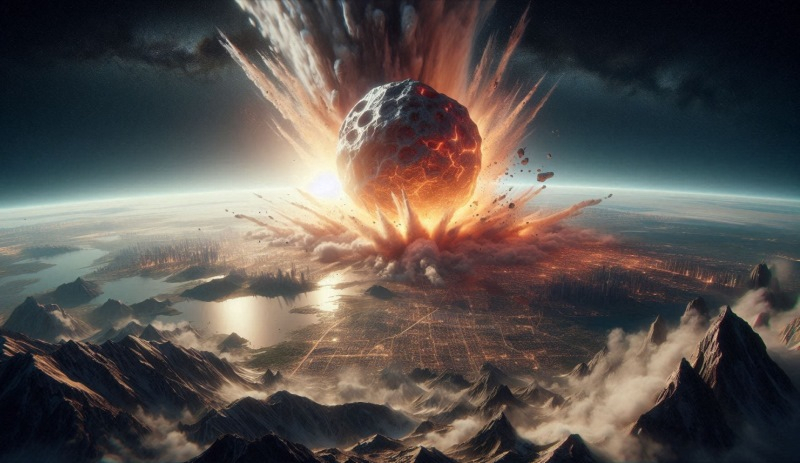It is symbolic that the asteroid that killed the dinosaurs came from the darkness and cold of the outskirts of the solar system. Scientists were convinced of this quite recently by analyzing ruthenium isotopes in the Cretaceous-Paleogene boundary layers. The asteroid was carbonaceous – such bodies are formed beyond the orbit of Jupiter. And he put an end to the fate of multi-ton reptiles, opening the way for mammals and humans.

Image source: tweaktown.com
Once again, scientists led by Mario Fischer-Gödde from the University of Cologne set out to find out the origin and type of the “Doomsday asteroid”. The objects of their interest were the isotopes of ruthenium found in rocks at the interface between the Cretaceous and Paleogene periods. Firstly, by the ratio of certain isotopes in a substance, one can judge the age of the samples, as well as how far from the Sun the celestial body was formed. Secondly, ruthenium isotopes of terrestrial origin are different from isotopes that came from space.
The fall of a 10-km asteroid, which caused a massive (at least 76%) extinction of the earth’s fauna about 66 million years ago, was accompanied by such a colossal release of matter that its traces are found all over the world. Scientists did not go to Mexico to the Chicxulub crater, the site of the asteroid impact, but took rock samples in Europe: Denmark, Italy and Spain. Spectral analysis helped to separate some isotopes from others, as well as terrestrial isotopes of ruthenium from space ones.
According to the conclusions made by scientists, the “dinosaur” asteroid was carbonaceous or C-type (more precisely, CC – from carbonaceous chondrites). Such asteroids are clearly different from rocky type (S) asteroids and form in the outer Solar System. Today we cannot say for sure from which point the asteroid that killed the dinosaurs came. But now scientists say with confidence that it arrived from beyond the orbit of Jupiter and that it is definitely not a comet. Potentially, Jupiter intercepts asteroids that would be fatal to Earth, but sometimes they break through. According to scientists, this happens approximately every 250–500 million years, but that will be another story.